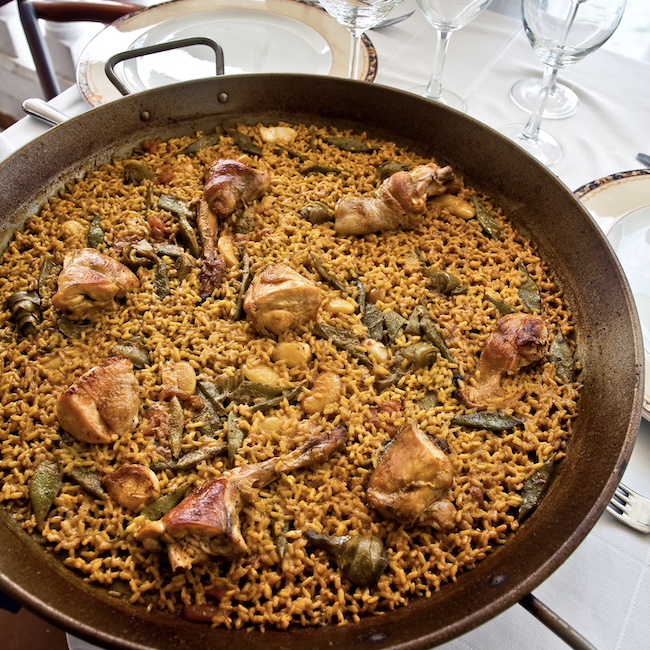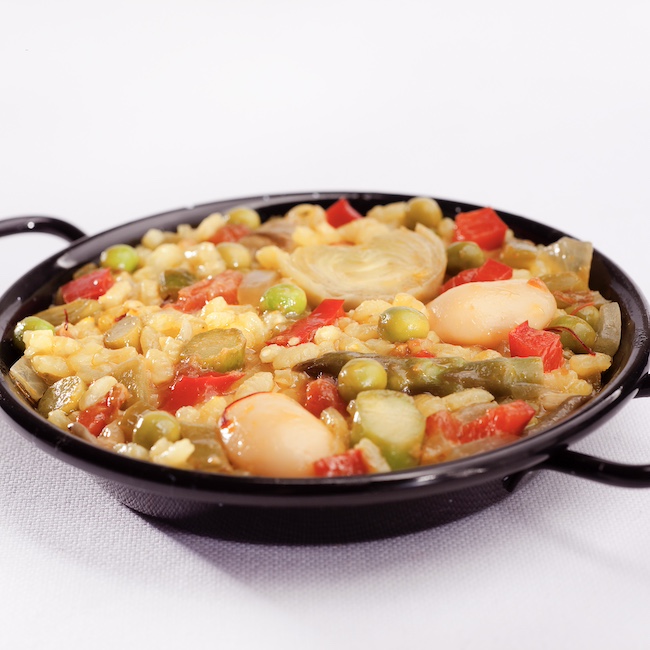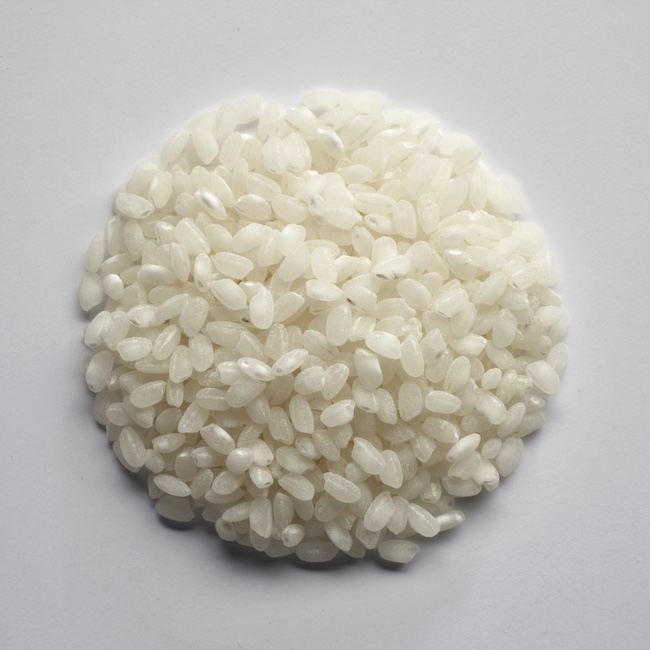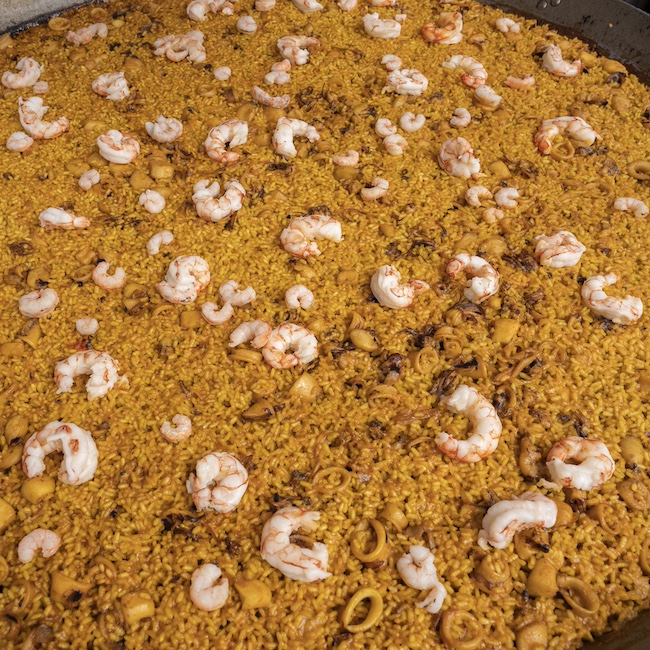by Blanca Valencia - @blancsvalencia
.png.transform/rendition-xs/image_image%20(1).png)

by Blanca Valencia - @blancsvalencia
In Spain, rice dishes abound from the cold climate staple arroz con leche in Asturias to the outdoorsy caramelised-bottom rice made in paella pans in the Valencian countryside. In essence there are as many rice dishes, or arroces as there are cooks. They can be as simple as arroz con verduras served in a primary school lunch hall to an elaborate restaurant thin rice dish crafted with saffron, lobster and the finest extra virgin olive oil. Accentuated by saffron, pimentón, extra virgin olive oil, the seasons and cooking vessels the best ones indisputably use monovarietal rice from Spain’s Rice PDOs (Protected Denomination of Origin) which is classification system used to protect the place of origin and manufacturing process of a food or beverage product.
Rice was introduced to Spain between the 8th and 10th century when the Arabs ruled most of Spain. Their skill as agriculturalists coupled with their knowledge of water enabled countless crops like olives, almonds, oranges and sugar cane to flourish in the Peninsula. The cultivation of rice has seen many ups and downs from laws that forbade its growing due to its association with malaria, to decreases in rural labour force. Climate change and the surge in interest in rice among home cooks and restaurateurs are sparking a greater conversation about sustainable rice farming methods.
Today, Spain is the second largest rice-producing country in the EU after Italy with about 105,000 hectares (approximately two times the size of Madrid) dedicated to this crop. Rices under PDO grow only medium grain rice Oryza sativa var. Japonica of the Extra category (the highest) that come from three different regions at the heart of Mediterranean Spain: Arroz de Valencia PDO, Calasparra PDO in Murcia and Albacete and the Arroz Delta del Ebro PDO in Catalonia.

Arroz de Valencia PDO: The Heartland of Rice
The region of Valencia, renowned for its rice, is not only home to the celebrated native Bomba, a medium-grain variety that is known for its ability to absorb flavours while maintaining a firm texture and resistance to overcooking but also to Senia, the largest variety under cultivation and which produces a creamy texture. Albufera, a cross between Senia and Bomba, is a recent addition. Rice cultivation has been present in the area for over 1,200 years. The Arroz de Valencia PDO was founded in 1998 and its geographic area includes all three provinces (Alicante, Valencia and Castellon) and natural settings like the Albufera Natural Park (a freshwater lake surrounded by wetlands) the wetland of Almenara and the Natural Park of Pego-Oliva and in which the producers work in a natural setting that is protected. Senia, the largest cultivar, includes 5 subvarieties J. Sendra, Bahia, Montsianell and Gleva. The cultivation of rice takes place in the flooded fields, known as marjals is a centuries-old practice that contributes to the rice's unique characteristics.

Calasparra PDO: The Purity of Calasparra Rice
The Calasparra PDO belongs to both the region of Murcia and the province of Albacete (Castilla La Mancha). The rice is characterised by its purity and ability to absorb liquids without losing its individual grains. Grown in the terraced fields at a higher altitude of 400 m and above of the Segura River and its tributary the Mundo river, the unique climate and water properties contribute to the distinctiveness of its rice which has been cultivated since XVII. The two permitted varieties are Bomba and Ballilla x Sollana (the x pronounced por) which is a cross between the two varieties from the 70s. Although the PDO was not registered until 1996 in 1928 the forward thinking farmers of the area registered the brand “Arroz de Calasparra”.

Arroz del Delta del Ebro DO: The Versatility of Bahia Rice
The Ebro River Delta is a fertile region in the province of Tarragona (Catalonia) and the third largest delta in the Mediterranean. It is renowned for the Bahia variety although the region produces 8 others in smaller quantities: Tebre, Fonsa, Montsianell, Gleva, JSendra, Guara, Bomba and Olesa. The Arroz del Delta del Ebro PDO is 70 percent of all the land devoted to rice cultivation of the area. Most rice varieties are native having similar characteristics with slight cultivation differences.
Rice cooking
The world of rice dishes is divided into 3 main categories: arroces secos or dry rice, melosos or creamy rice, and caldosos or soupy rice. These in turn can be defined by the vessels used like arroz en cazuela or earthenware. Like baking, rice cooking requires precise measurements and proportions: liquid to rice ratio, fat to rice ratio and time ratio that each variety takes to cook.
Chefs rely on knowing the percentage of amylose, a polymer found in starch that helps rice maintain its shape, of each variety (and some trial and error!) to decide what rice should be used for what type of rice cooking. Higher amylose rice like Bomba and Albufera allow for more resistance to heat and less overcooking whereas other varieties with lower ones leave less room for error and are better handled by chefs well versed in rice cooking. They also take into account the absorption characteristics and the resulting texture of the rice.

Rice evolution
Like everything else in modern Spain, rice seasonal dishes have evolved and the world of rice is far from the static one that rice purists portray (although Valencian Paella has a very fixed set of ingredients). Santos Ruiz, the manager of the Arroz de Valencia DO, a tireless promoter of the region’s rice and its culture, says that “rice is not an orthodox as some people believe, every mother makes a different rice”. “For instance where I am from in Xátiva (Valencia) we make rice with meatballs made from pork and veal”.
The use of the word “paella” is always at a boiling point and confronting new challenges and controversies. As we mentioned before, Valencian Paella has a defined formula in which only certain ingredients are used. There are also other paellas as Seafood paella or Mixta paella (in which meat and seafood go together), to name just two examples. And there also are “rice with stuff” recipes like the one from British chef Jamie Oliver’s, whose use of chorizo made it highly controversial.
There are also creative ideas from chefs, like the ultra thin crispy “griddled” rices which chef Begoña Rodrigo feels have been fueled by social media culture and bear no resemblance to the multiple textures of traditional rice. The owner and chef of one-star Michelin restaurant La Salita, this self-taught chef who is also an ambassador for PDO Arroz de Valencia is not always tied to tradition despite being 100% Valencian her rice dishes can feature butter, seaweed or pickled ginger. She has been investigating the role of acidity and develops many kinds of vinegars. She is keen on mantecados, a newer term that has been added to the rice lexicon where she uses half butter and olive oil in meloso type rice and has recently developed arroz escabechado in which the millenary tradition of escabeche, a form of meat and fish preservation, meets the world of rice.
Noelia Pascual, the chef del fuego or fire chef in her restaurant Cachito sticks close to traditional rices and methods of her native Elche in Alicante where she inadvertently challenges the status quo by the mere fact of being a woman in a role that has largely been associated with men. Many chefs especially overseas just sidestep any controversy by not using the p word (paella) in their menus.
Modern Spaniards use a varied toolkit of modern and old-fashioned tools: non-stick pans, pressure cookers, iron pans, stainless steel pans, earthenware vessels and ovens to create unique rice dishes. What they all have in common is high-quality monovarietal rice.